If you follow me on Instagram, you know I just recently learned how to weld! And it’s not as intimidating as I thought! It does take a bit of prep work, though. The best welds come from clean metal to metal contact; any foreign materials in the welding area can cause welding imperfections. The steel is usually greasy, grimy, and covered in rust and mill scale when you get it from the metal supply shop, so you’ve got to clean the steel before you can begin welding. Whenever you’re TIG welding, everything needs to be clean – from the metal to the torch and everything in between. Here’s my typical prep work routine.

Supplies:
Where To Buy Metal
- Local Metal Supply Shops
- Pros: least expensive, they will cut everything to lengths for a small fee, lots of scraps you can get for cheap.
- Cons: they cater to a professional crowd, so you may need to find someone with a little patience to help you find the best type of material for your project.
- Online Metal Supermarkets
- Pros: they’ll cut and deliver anything you want, and because they typically use machines, the cuts are precise.
- Cons: can be expensive and most of their websites are a little clunky. You need to know exactly what you’re looking for.
- Home Improvement Stores
- Pros: easily accessible and readily available
- Cons: most expensive and they usually only offer shorter lengths (nothing over 5 feet)

How To Clean Steel For TIG Welding
Use an angle grinder with a 60- or 80-grit flap disc and grind off the mill scale until you get down to bright, shiny metal. You don’t need to clean off the entire bar, though – just clean the joints where you’re going to weld. Then use a rag and wipe the metal down with acetone to remove any remaining grease or oils.

How To Sharpen the Tungsten Electrode
In order to get the best weld and set yourself up for success, you’ll need to prepare the tungsten electrode by sharpening it to a pencil point. You can use a bench grinder for this, but be sure that the grinding wheel is clean so you don’t risk contaminating the tungsten with whatever is on the wheel. If possible, designate a dedicated wheel just for sharpening your tungsten.
Turn the grinding wheel on and let it get up to speed, hold the tip of the the tungsten to the wheel lengthwise, and slowly rotate it to sharpen it to a point. Try not to hold the tungsten crosswise against the grinding wheel or you’ll grind microscopic ridges into the electrode, which can restrict the welding current and cause the arc to wander as you’re welding. Once the electrode is sharpened, wipe it down with some acetone. It’s also a good practice to sharpen several electrodes so you have some ready on-hand in case one gets contaminated. It makes switching out the tungsten electrode much faster and more efficient.

Prep the Filler Rod
You’ll also want to remove any oils or contaminants from the filler rod, so lightly sand it with a fine grit sandpaper, then wipe it down with acetone as well.
Now that the tungsten electrode, steel, and filler rod is clean and prepped, you’re ready to start TIG welding! Check out the fun video I did with the sisters from Shanty 2 Chic. I haven’t been welding long, but I wanted to show you how easy it is to start welding projects, even as a beginner! I drove up to their workshop in Fort Worth, gave them a crash course in TIG welding, and we welded this coffee table base! Plans for the coffee table are coming soon, so stay tuned for that!
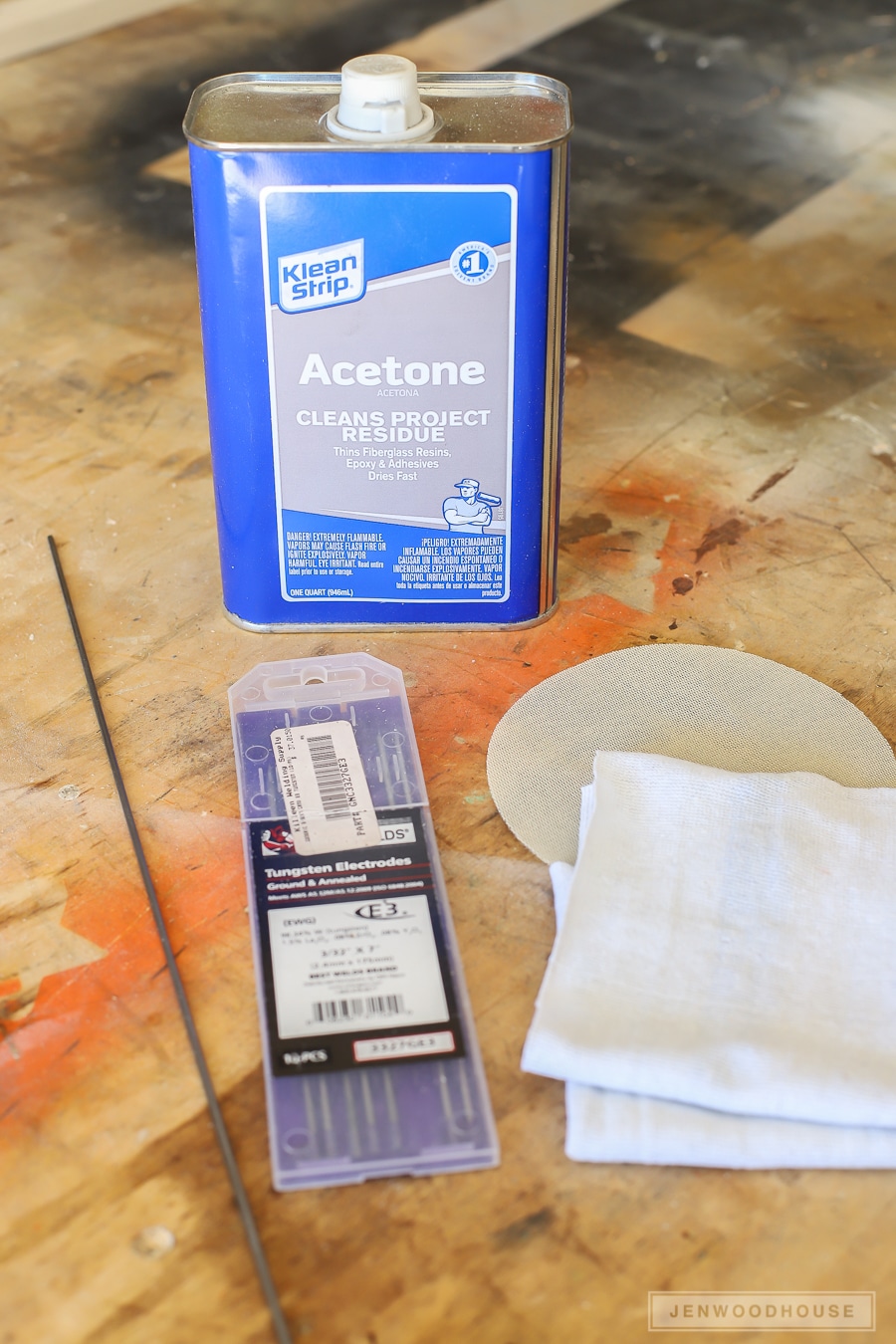
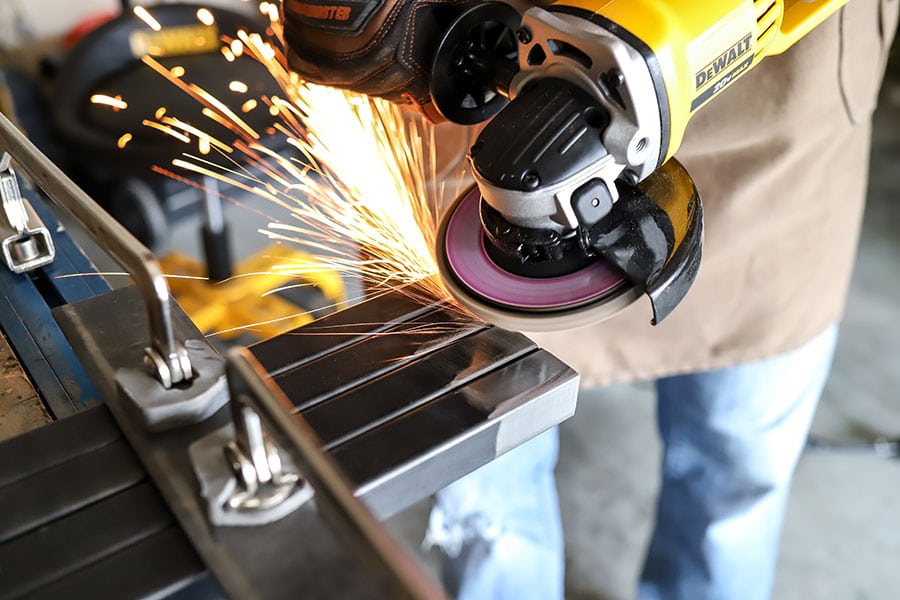
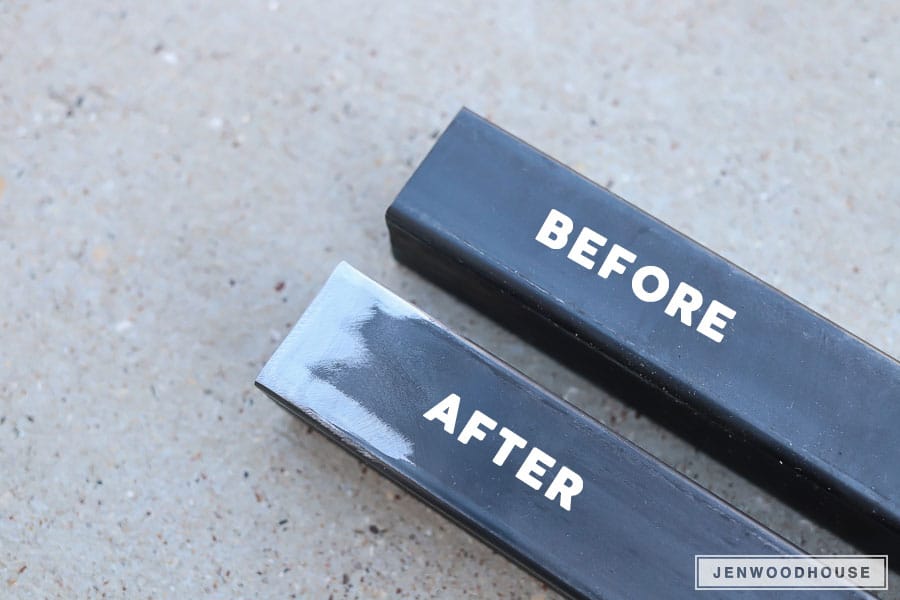
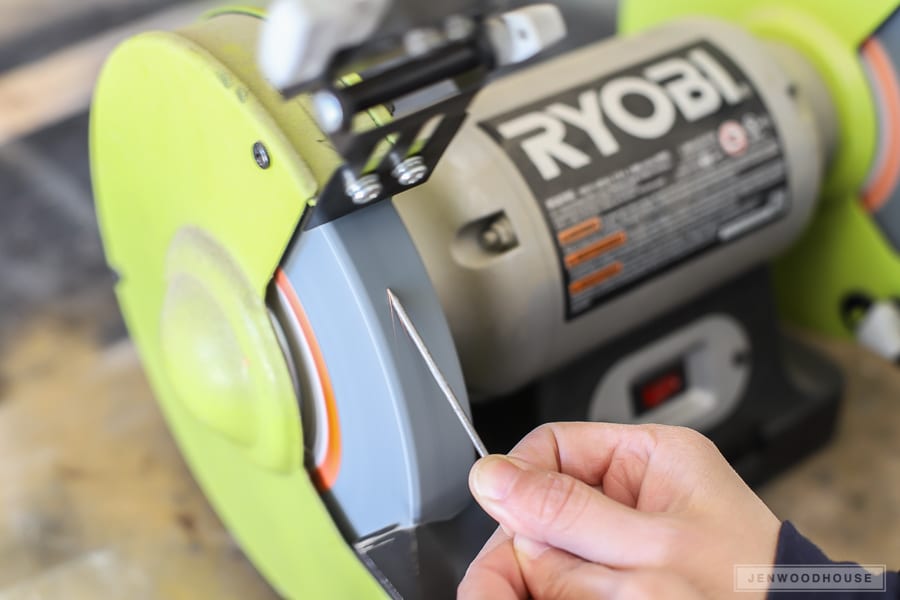
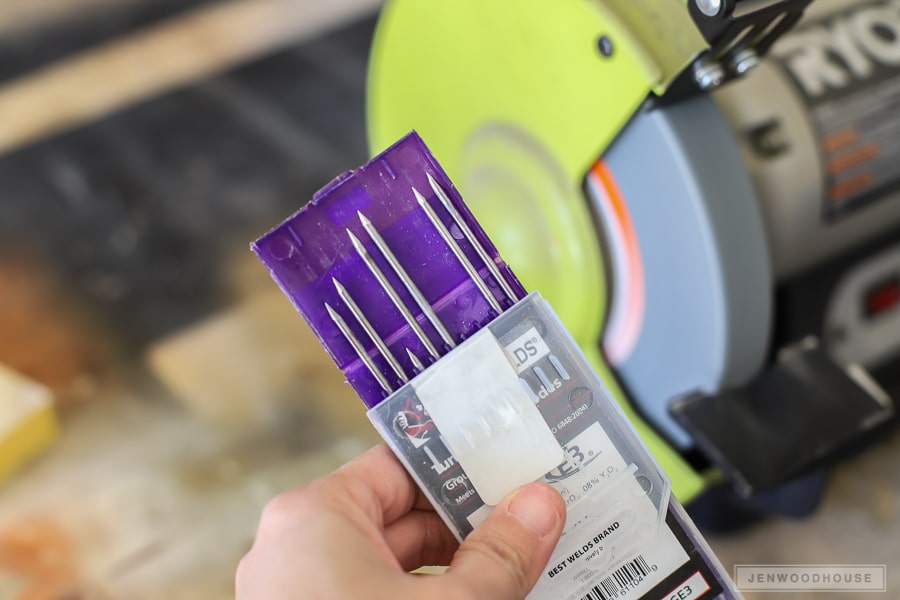

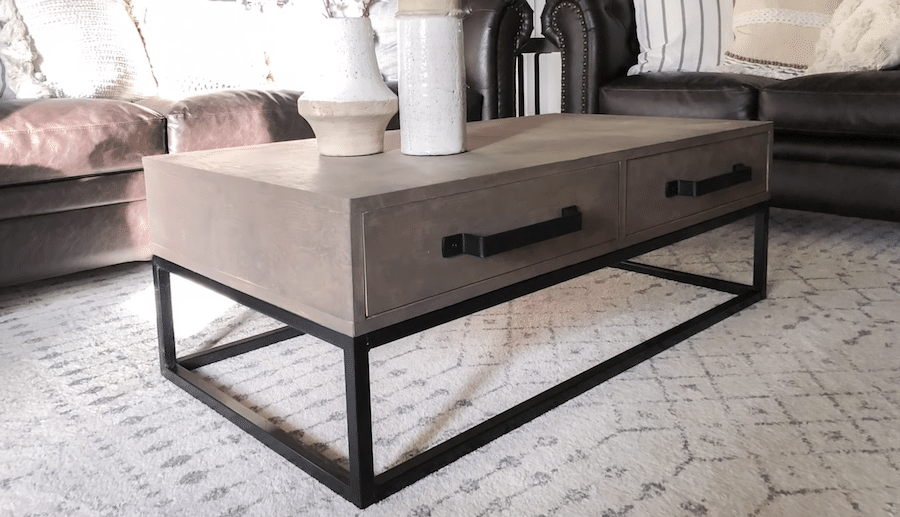
Put that tungsten in a drill and get a perfect point every time.